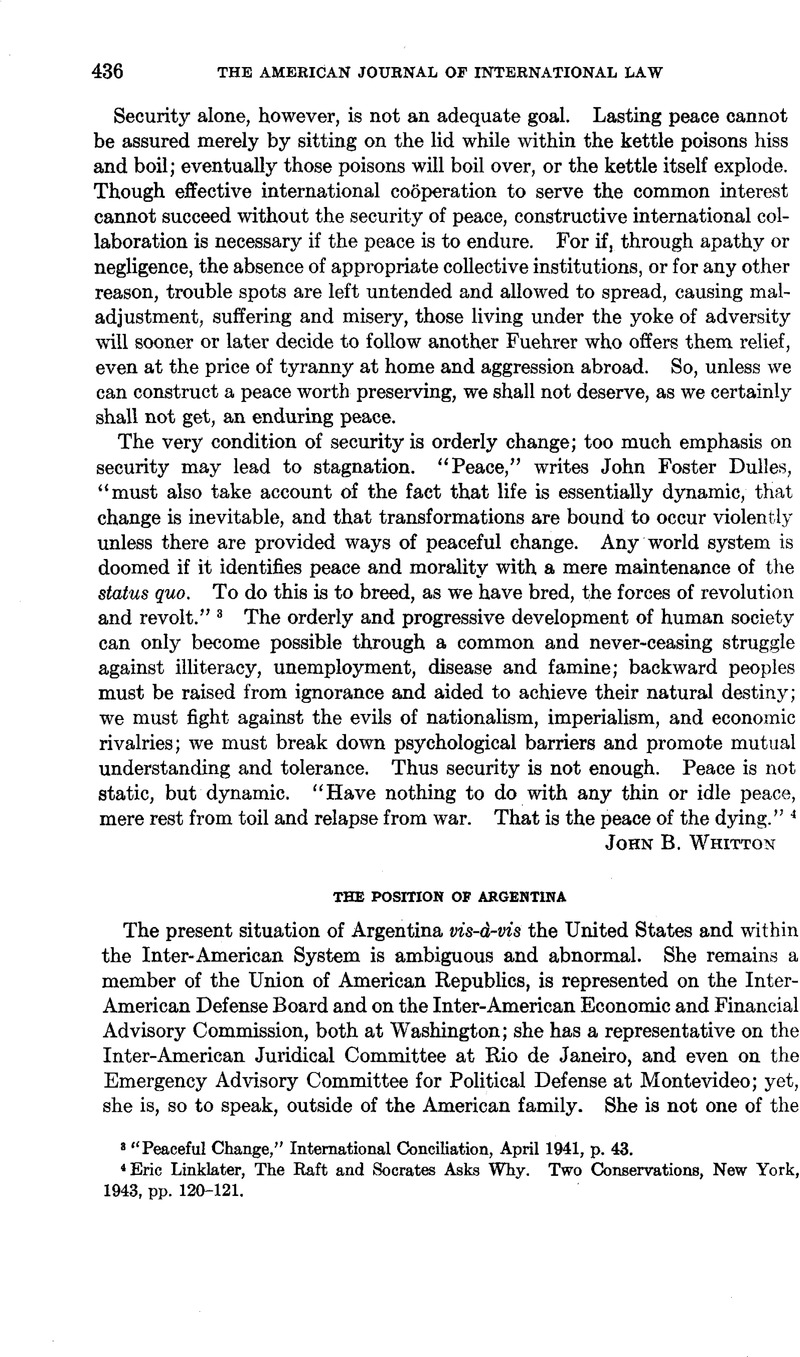No CrossRef data available.
Published online by Cambridge University Press: 25 April 2017

1 Cf. Popper, David H. (Inter-American Monthly, May, 1942; pp. 10–11 Google Scholar, 45–46; Ysabel Fisk: “Argentina, The Thirteen Years Crisis” in Foreign Affairs, January 1944, pp. 256–260).
2 Cf. Alfredo, Colmo: La Revolucidn en la America Latina, Buenos Aires, 1933 Google Scholar (2nd ed.).
3 Cf. Kunz, Josef L.: Die Anerkenung von Staaten und Regierungen im Völkerrecht, Stuttgart, 1928, pp. 110–168 Google Scholar.
4 For our recent recognition policy vis-á-vis Latin American Republics cf. Hackworth, : Digest of International Law, Washington, 1940, Vol. I, pp. 174–192 Google Scholar and 222–281.
5 It was stated by the Secretary of State on May 19, 1944, that the result of an investigation of Bolivian affairs being made by the U. S. ambassador in Panama would be communicated to the other American Republics, but that in the meantime our policy of nonrecognition would stand (New York Times, May 19, 1944, p. 4).
6 Cf. Haring, Clarence H., Argentina and the United States, Boston, 1941 Google Scholar.
7 Cf. Norb. Piñero, La politica internacional argentina, Buenos Aires, 1935, and La Politica exterior de la Republica Argentina, Documentos, Buenos Aires, 1931.
8 Cf. Lockey, J. Byrne, Panamericanism, Its beginnings. New York, 1920, pp. 284–5 Google Scholar, and Ricardo, Levene, Significación histórica de Mariano Moreno, Buenos Aires, 1937 Google Scholar.
9 “El arbitraje amplio” under the so-called “fórmula Argentina.”
10 Cf. the observations of D. Antókoletz on the non-existence of an American International Law (Quinta Conferencia Internacional Americana, Santiago, 1923. Adas, Vol. I, pp. 433–442). In the same sense Antókoletz and Saavedraa Lamas spoke at the Buenos Aires Conference 1936.
11 Cf. Quintana, L. M. Moreno, La diplomacia del Presidente Irigoyen, 1916–22, La Plata, 1928 Google Scholar.
12 Hispanidad gained much in Argentina through the Eucharistic Congress held at Buenos Aires in 1934. See the speech by the Cardinal-Primate of Spain, Dr. Dr.Tomas, Goma y: Apologia de la Hispanidad (reprinted in Ramiro de Maeztu, Defensa de la Hispanidad, Valladolid, 1938 (3rd ed.), pp. 309–354)Google Scholar.
13 Cf. Loewenstein, K. in Harvard Law Review, July 1943, pp. 1261–1306 Google Scholar.
14 First alluded to in Sumner Welles’e Boston speech of October 8, 1942, then proved by the presentation of three documented memoranda to Argentina in November, 1942.
15 New York Times, May 14, 1944, p. 16.
16 Cf. Lloyd Mallan in Virginia Quarterly Review, Winter, 1944.
17 Cf. this Journal, Vol. XXV (1931), p. 719; Juan José Soler, La Doctrina Estrada sobre reconocimiento de los gobiernos de facto, Revista de Derecho Internacional, Vol. XIX (1931) , pp. 5–15.